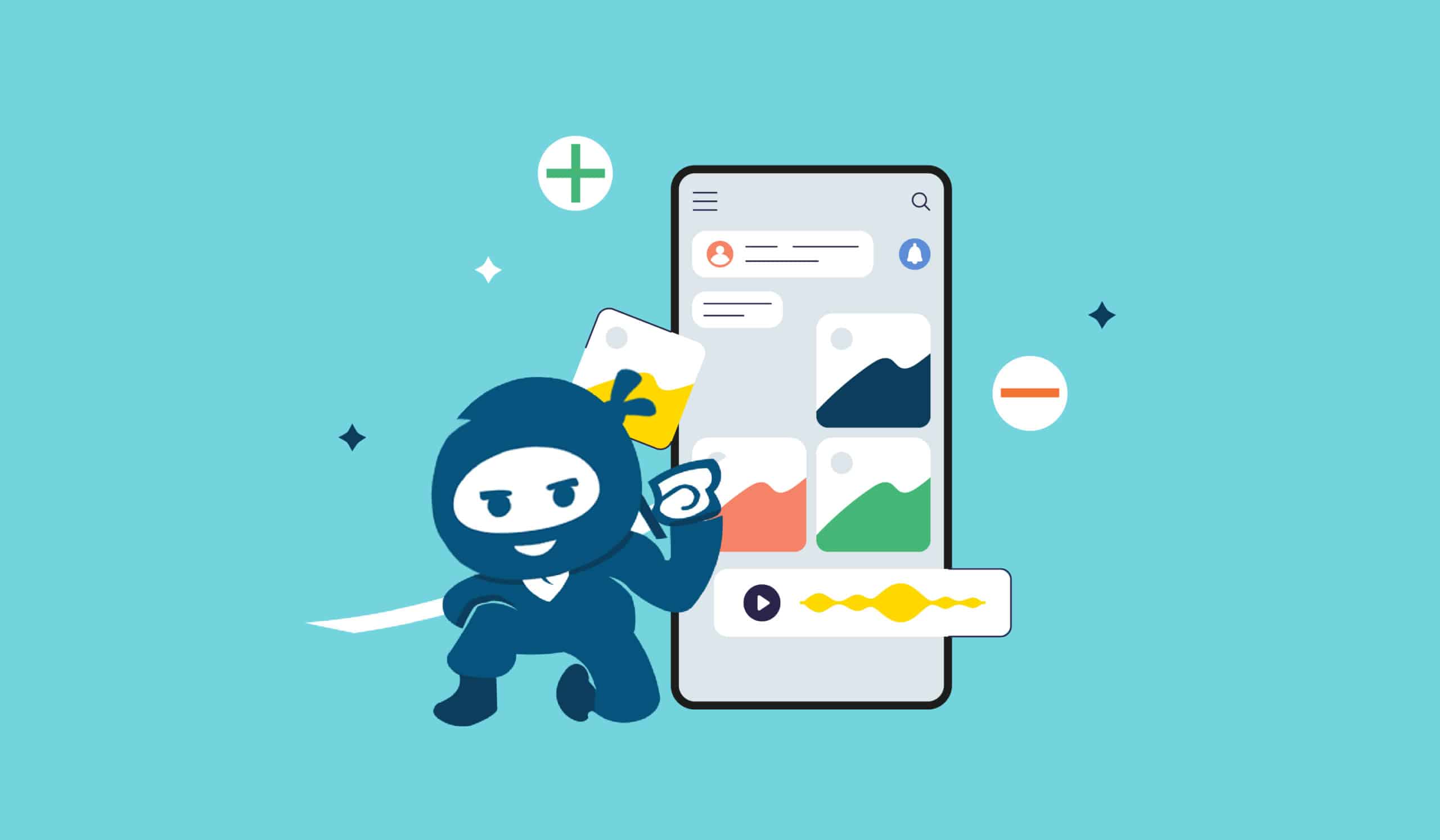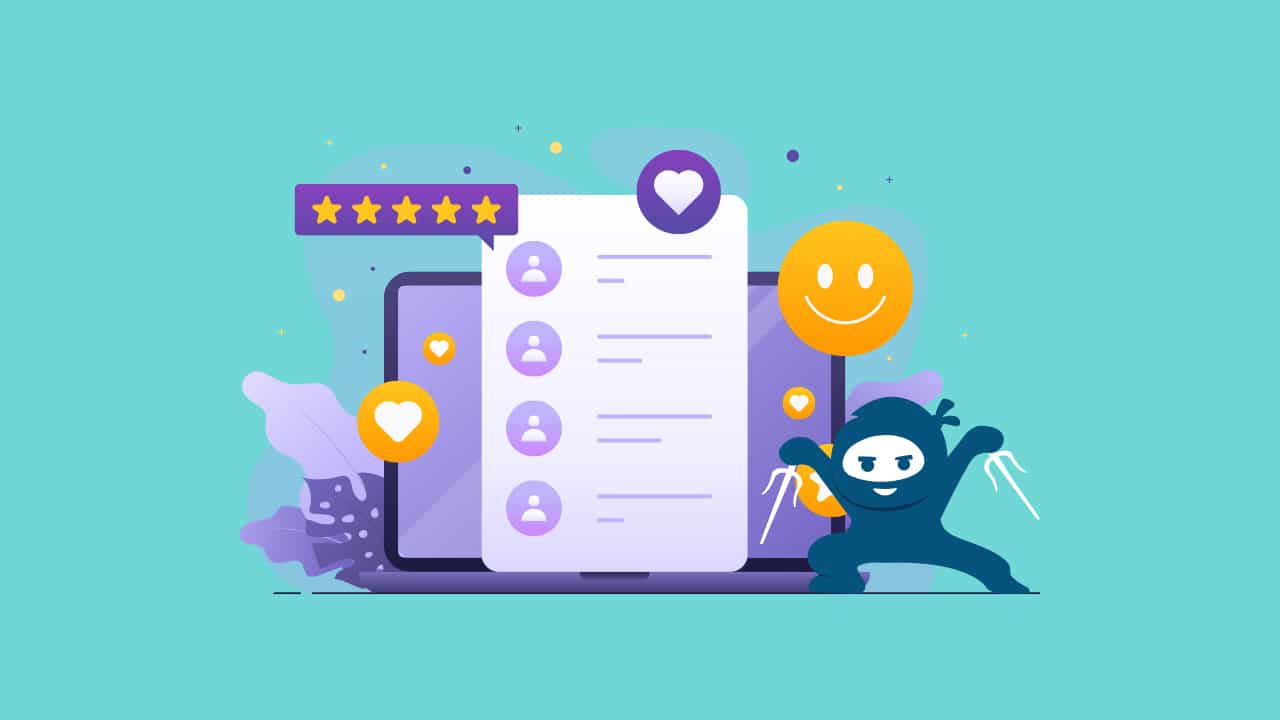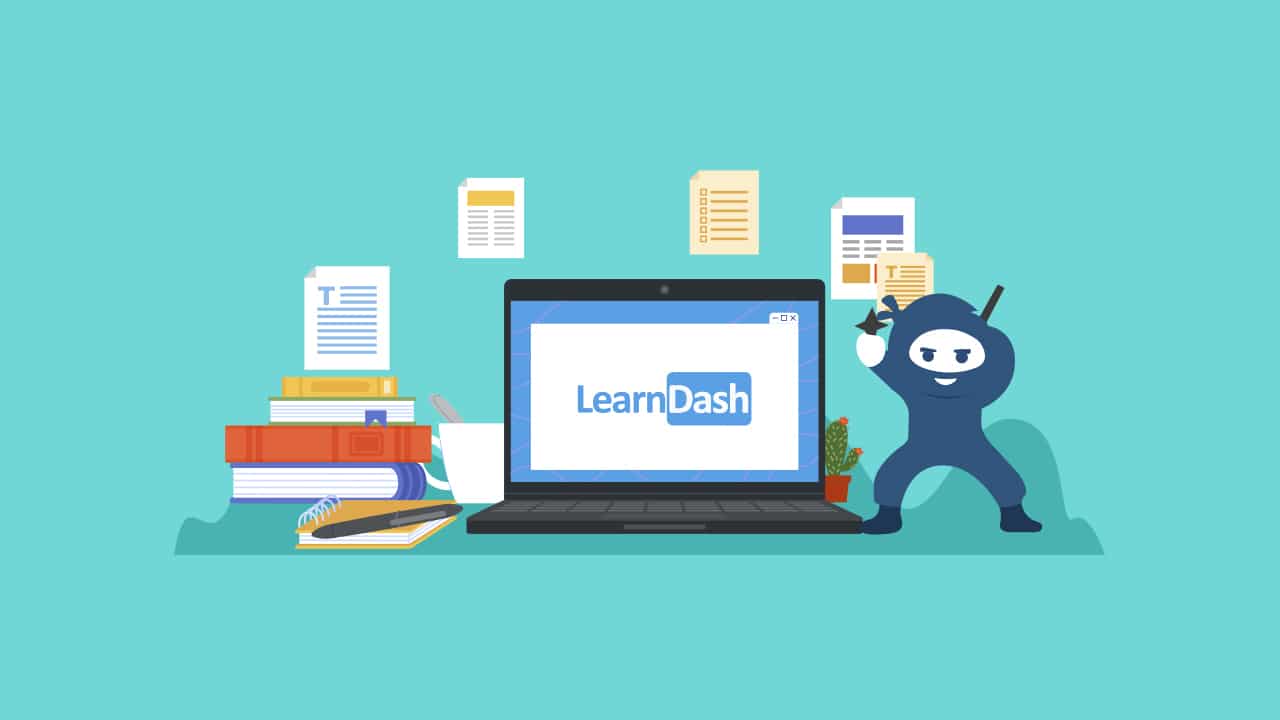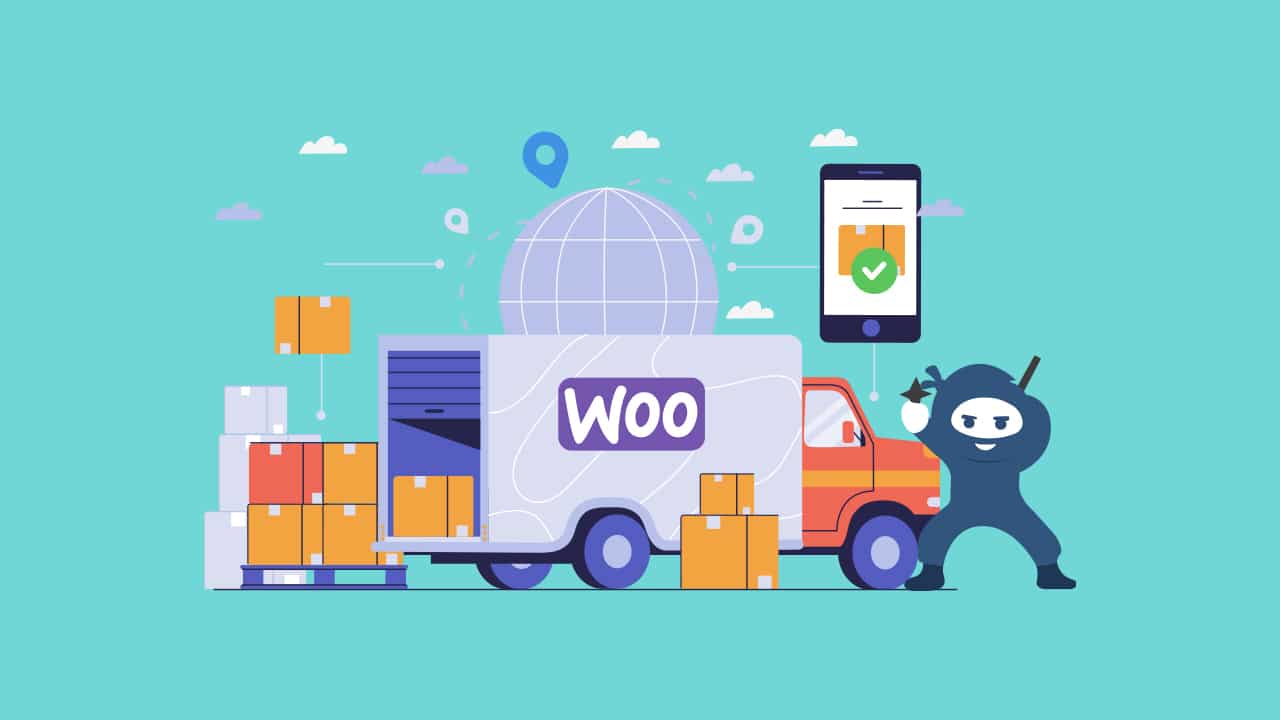Many online course creators prefer to host, manage and sell online courses through an e-learning website. However, it’s becoming more and more common for course creators to also launch an online course app to easily share learning content with their students.
Apps provide a new way for educators to sell their courses and grow their audience, and also provide a more robust mobile learning experience to students on-the-go. On the other hand, creating an e-learning app also comes with its fair share of challenges.
If you’re considering creating an online course app of your own, how do you know if it’s actually worth it?
The Benefits Of An E-Learning App
Creating a mobile learning app has a number of distinct benefits, both for you as an instructor and for improving the learning experience of your students.
Online Course App Benefits For Instructors
Creating an e-learning app holds great benefits for online course creators. First, it offers new ways of delivering content – mobile apps are great for micro-learning strategies, so they’re ideal for implementing bite-sized courses and content suited to learning on the go.
A mobile learning app also offers increased exposure, as you’ll be able to advertise your app through the Apple App Store, Google Play, and other app stores. This means you’ll be able to gain new users via your app who will then go on to buy courses through both your app and your website.
Finally, a mobile app can improve engagement rates. Push notifications are a handy way to encourage users to use your app and courses on a daily basis. Moreover, providing courses through a mobile-native app rather than a mobile-optimized website will provide a much smoother mobile learning experience for your students, meaning they’ll be more likely to access your courses on the go.
Online Course App Benefits For Students
Mobile learning apps can be highly useful for students who want to be able to learn on the go – for example, if their only time for learning is during commutes to and from work. As mentioned above, using an app is a much better experience than using a mobile site, especially if you add the ability to access courses and content offline.
Micro-learning opportunities enabled by your app can also be great for students, as they cater to different learning styles and schedules. Overall, a mobile app is simply a great way of providing your students with much more flexibility in how they consume your course content.
The Drawbacks Of A Mobile Learning App
Although it can be highly beneficial for some, a mobile app isn’t always the best idea for everyone. Building a mobile app also has some drawbacks for you to consider, both for yourself and your students.
E-Learning App Drawbacks For Instructors
The main drawback of mobile apps for course creators and instructors is that they are expensive to develop and keep running. As well as the initial cost of development and ongoing costs for hosting, maintenance and subscriptions, creating a mobile app also means investing time and money into developing new features and content on an ongoing basis to ensure it continues to add value to the user experience.
In addition, while an app can help you to draw in new students and thus new sources of revenue, the catch is that it’s likely your app store of choice will require a percentage of any in-app purchases as part of its terms of service.
E-Learning App Drawbacks For Students
Mobile apps aren’t always a net positive for students, either. Push notifications can be useful, but for some students, they may simply end up being a distraction from other commitments. Plus, the reverse is true – notifications from other apps can distract them from your courses, leading to a poorer learning experience than using a desktop site.
The other drawback for students is that a mobile app could create an uneven learning experience. If some course content is exclusive to your site or your app, then students who exclusively use one or the other won’t be able to access the full range of your content.
How Can Online Course Creators Make An E-Learning App?
To start with, let’s look at the process of creating your own e-learning mobile app. The most obvious route is to create an app from scratch. This approach means you can design it to be exactly how you want it, with all the ideas and features you have in mind implemented from the start. As such, a custom-developed app is a great way to ensure you create an impressive, feature-packed and easy-to-use mobile learning app.
However, the custom approach can end up costing a lot – if you outsource to a third-party developer to create your app, then the price could easily reach thousands of dollars even for the cheapest apps. The other option is to develop the app yourself, but this requires some solid programming knowledge and will take a lot of time to get right, especially if you’re working on your own.
The better option in many cases is to build an app using your existing e-learning site as a basis – especially if your site is based on WordPress. There are all manner of apps, plugins, and services that can quickly and easily convert your WordPress-hosted LMS into an e-learning app.
This option is much quicker than custom development, and often much cheaper, too. However, using a website-to-app converter will often mean you’re more limited in terms of features and design compared to a custom app.
What Plugins Can I Use To Create A Mobile Learning App?
There are a variety of different WordPress-to-app converters available, all offering different features and pricing models. AppPresser, for instance, is an easy-to-use platform that can convert any WordPress site into a mobile app in a quick, simple process.
It also includes a visual app customizer that allows you to change your app’s appearance in a manner similar to using WordPress themes, and provides a number of handy in-built features such as integrated push notifications. At $59 per month for an annual subscription, it’s one of the cheapest options available.
There’s also the BuddyBoss App, which allows you to convert your WordPress site quickly, easily, and effectively into a mobile app. BuddyBoss apps are highly customizable and work seamlessly with LearnDash allowing you to implement great features to your mobile learning app including access to content from your multi-tier courses, drip-feed content, certificate and badges, course prerequisites, and more. Paired with the app’s push notifications and extensive community features such as member profiles, forum discussions, activity feeds, messaging and more, you are all set to boost student engagement. Pricing starts at $179 per month for a yearly plan, with higher tiers giving access to more features and support.
Another option is MobiLoud. MobiLoud’s WooCommerce and Canvas options both allow you to quickly and easily make a mobile-native app based on your WordPress e-learning site, with the useful ability to retain the plugins and added functionality on your site in your mobile app.
It also has various useful features such as integrated push notifications, mobile ad support, analytics, and custom branding. It’s one of the more expensive options, at $170 per month on an annual plan.
How Easy Is It To Set Up An App For An Online Course?
The process for setting up a mobile learning app will differ depending on whether you go for a custom-developed app or if you decide to convert your existing e-learning site into a mobile app. Generally speaking, the custom app will take longer to develop and will cost you more, but will allow you to control and customize pretty much every element of its design to ensure it has all the functionality you want.
Converting a WordPress site that uses an LMS such as LearnDash, on the other hand, will be much quicker and cheaper than a custom app. The downside is that you may be more limited in what you’re able to customize within the app.
Custom App Development
The start of the process for creating a custom app will be for you to plan and design it. Think about what features you want it to have, what sort of content it’ll use, how it will integrate with your existing site, and how it will look and feel to use. You should also work out what your budget is for developing your app – it can quickly get expensive, so make sure to have a figure in mind for how much you’re willing to pay.
Next, take these plans to a developer. Don’t be afraid to approach multiple app developers with your app idea, as different devs will have different apporaches about how to implement your plans (and will likely offer you different quotes for the cost, too). Once you find the right developer, they can start working on your app. This process will generally involve several steps:
- Building an initial prototype for the app, followed by a minimum viable product (a very basic version of the final product)
- Establishing required specifications, designing a user interface, and working to implement your vision of the user experience
- Develop additional features, refine existing features, and test for quality assurance
- Carry out final testing such as beta tests, then launch the app on app stores
In addition, the developer may provide ongoing support in terms of app maintenance, updates, and the development of new features.
Alternatively, rather than going to a third-party developer, you could try to handle all of this yourself. Bear in mind that this will take a lot of time and effort, though, and if your programming skills aren’t up to scratch there’s no guarantee your end product will be successful.
The main challenge in this process is to develop an app that truly adds value to the learning experience. App development is a significant investment, so you need to ensure that it’s actually worth doing; if your app doesn’t add anything to the user experience, your students won’t use it, and you won’t actually get any benefit from it.
WordPress Or LearnDash Apps
Taking an existing WordPress site using LearnDash or a similar LMS to function as an e-learning site and converting it into an app is a much simpler process than custom app development. In terms of planning, you’ll mainly have to think about which app conversion plugin or service you’ll be using – bear in mind what features you want your app to have and what you want it to look like.
Once you’ve picked your WordPress-to-app converter, it’s usually a fairly simple process to create your mobile learning app. This process is much quicker and simpler than creating a custom app, and the option to add custom branding with most app converters means that you can still create a visually distinctive app that matches your site’s appearance.
However, be aware that different features may require more work to set up your app and may provide different features. BuddyBoss, for instance, provides more support on its basic plan than AppPresser does for deploying your app to app stores.
Using an app conversion plugin for your LearnDash site or other LMS takes much less time and is much less expensive than creating a custom app. It does come with its own challenges, though – such as implementing new features and integrations. Since you have less control over the backend of your app in this scenario, you’ll often find it harder to add custom functionality. If you don’t know how to go about using one of this plugins or website-to-app conversion solutions, our experts LMS developers can help!
Conclusion
Mobile apps can be a great way for online course creators to expand their audience, deliver new learning experiences, and create new revenue sources – but they can often be a hefty investment in terms of time, money, and effort. If you are not sure whether an app is the best engagement boosting solution for your e-learning site, get in touch with our LMS Consultants for expert guidance and advice.



